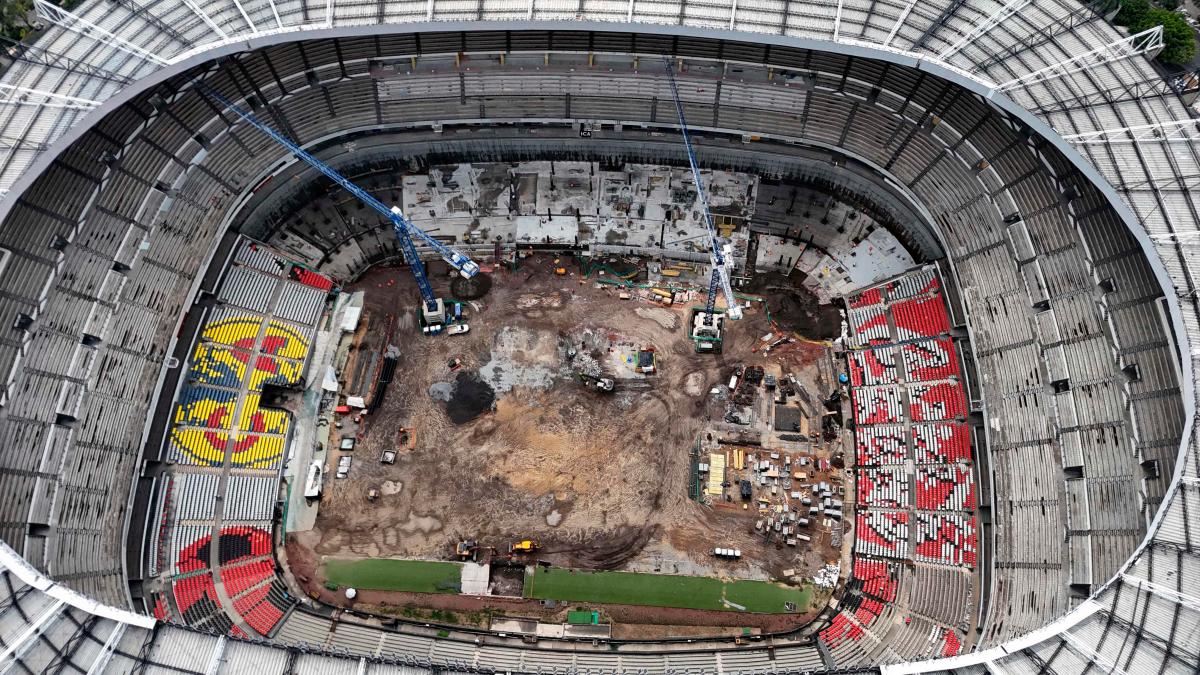MEXICO CITY: Decades after hosting victories by Pele's Brazil and Diego Maradona's Argentina, Mexico City's legendary Azteca Stadium is undergoing a major revamp as it prepares to feature in an unprecedented third World Cup.
Mexico's previous World Cups are widely regarded as two of the best ever, evoking the magic of Pele and the 1970 Brazil team and the genius of Maradona in the 1986 tournament won by Argentina.
But the Azteca's glory has since faded, leaving the six-decade-old stadium in need of an overhaul before the 2026 World Cup, which Mexico will co-host with the United States and Canada.
Construction has progressed “considerably,“ according to officials at the stadium, which will be the venue for five World Cup matches including the opening clash on June 11.
With much of the renovation kept under wraps, even the man who oversaw the original construction of what he calls “an icon of Mexican architecture and engineering” is unsure what to expect.
“I have no idea what it’s going to look like, but I hope it turns out very well,“ architect Luis Martinez del Campo told AFP.
'One flaw'
For the 2026 World Cup, FIFA required more comfortable seating, Wi-Fi for spectators, and hybrid turf made from a combination of natural grass and synthetic fibers.
The capacity will increase from 83,264 to 90,000.
A major improvement will be a new players' tunnel.
“The stadium only has one flaw that we knew about since we were designing it,“ said Martinez del Campo, now 90.
Due to the location of a water drain, players previously arrived from the locker rooms through a tunnel behind the goal.
Next year, they will burst into view at the side of the pitch.
In February, the stadium's owner, Grupo Ollamani, revealed that investment in remodelling the venue had reached nearly $80 million.
The next month, Ollamani said that it had agreed to rename the stadium after the Banorte bank in return for more than $100 million to continue the renovation.
The sponsorship deal means the venue will be called Banorte Stadium for 12 years, to the dismay of fans.
Martinez del Campo believes that while the Azteca Stadium name is “timeless,“ anyone who invests a lot of money in the venue “deserves to have their name on it.”
Since FIFA does not allow commercial names on stadiums during championships, it will be called Mexico City Stadium during the World Cup.
VIP box row
Controversy also surrounds the luxury boxes and seats that people bought to finance the stadium's construction, giving them the right to attend all the events there for 99 years after its inauguration in 1966.
During the 1970 and 1986 World Cups, box and seat owners were allowed to attend matches, but FIFA wants to have access to all the seats by 2026.
An association of box and seat owners is negotiating with stadium officials to defend its rights.
The Azteca Stadium has hosted a record 19 World Cup matches, which will increase to 24 next year, including a third opening match.
In the northern city of Monterrey, the remodeling continues at the BBVA Stadium, which will host four matches.
The revamp required three major improvements, Alberto Molina, director of operations for local team C.F. Monterrey, told AFP.
The pitch will also have a hybrid turf that workers aim to lay by next month, Molina said.
The overhaul, which also includes remodeling the VIP boxes and expanding the press area, is on track to be completed this year, Molina said.
At the Akron Stadium in Guadalajara, which will also host four matches, a revamp involves new lighting and sound systems, high-speed Wi-Fi and hybrid turf.
The city, located in one of Mexico's most crime-plagued states, will deploy several thousand police officers to provide security during the World Cup.









